On April 15…
“It will take time to follow every lead and determine what happened. But we will find out. We will find whoever harmed our citizens and we will bring them to justice. We also know this — the American people refuse to be terrorized. Because what the world saw yesterday in the aftermath of the explosions were stories of heroism and kindness, and generosity and love … So if you want to know who we are, what America is, how we respond to evil — that’s it. Selflessly. Compassionately. Unafraid.”
~President Barack Obama
Boston Marathon Bombing Statement
April 16, 2013.
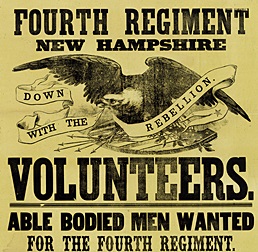
1861– Following the surrender of Fort Sumter two days earlier, President Abraham Lincoln issued a proclamation calling for 75,000 volunteer soldiers to quell the Southern “insurrection.”
There were so many volunteers in Ohio that they could have met the full call for 75,000 men by themselves. However, governors from border states were undiplomatic in their responses.
Gov. Claiborne Jackson wrote, “Not one man will the state of Missouri furnish to carry on any such unholy crusade”, and Gov. Beriah Magoffin wrote, “Kentucky will furnish no troops for the wicked purpose of subduing her sister Southern states.”
Virginia, North Carolina, Tennessee and Arkansas never considered sending volunteers. Over the next three months, each one of them joined the Confederacy.
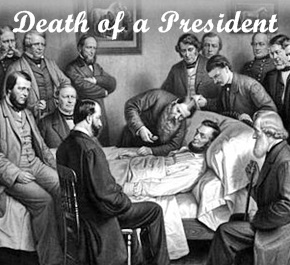
1865 – At 7:22 a.m., Abraham Lincoln, the 16th president of the United States, died from a bullet wound inflicted the night before by actor (and Confederate sympathizer) John Wilkes Booth.
After remaining in a coma for nine hours, Lincoln – who had been taken to the Petersen House across the street from Ford’s Theater – took his last breath. Secretary of War Edwin Stanton softly said, “Now he belongs to the ages.”
Vice President Andrew Johnson – another intended target the night before – appeared before Salmon Chase, Chief-Justice of the United States, at 10:00 a.m. and took the oath of office as President of the United States, assuming its duties and functions.
Aftermath: Booth had fled on horseback with accomplice David Herold to southern Maryland overnight and, 12 days later, at a farm in rural Port Royal, VA, both were tracked down sheltered in a barn. Herold surrendered, but Booth maintained a standoff.
After the authorities set the barn ablaze, Union soldier Boston Corbett fatally shot him in the neck. Paralyzed, he died a few hours later.
Of the eight conspirators later convicted, four – Lewis Powell, David Herold, George Atzerodt, and Mary Surratt – were hanged on July 7, 1865.
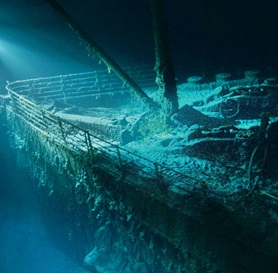
1912 – At 2:20 a.m., the “unsinkable” RMS Titanic sank into the North Atlantic, three hours after colliding with an iceberg.
Because of a shortage of lifeboats and the lack of satisfactory emergency procedures, more than 1,500 people went down in the sinking ship or froze to death in the icy North Atlantic waters.
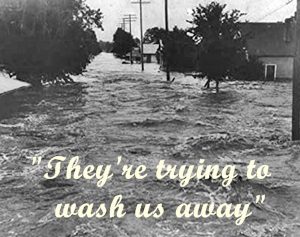
1927 – On Good Friday, 15 inches of rain fell in New Orleans in 18 hours.
More than 4 feet of water covered parts of the city. A group of influential bankers met to discuss how to guarantee the safety of the city, as they had already learned of the massive scale of flooding upriver.
A few weeks after, they arranged to set off about 30 tons of dynamite on the levee at Caernarvon, releasing 250,000 cubic feet of water. That prevented New Orleans from suffering serious damage, but it resulted in flooding much of St. Bernard Parish and the poorer Plaquemines Parish.
The New Orleans businessmen did not compensate the losses of people in the downriver parishes.
Flood Song Factoid: The incident later inspired Randy Newman to write and record Louisiana 1927 in 1974. The lyrics laid out the widespread nature of the intentional destruction (“river had busted through clear down to Plaquemines“) and the volume of water the flood (and the dynamite) produced (“six feet of water in the streets of Evangeline … They’re trying to wash us away.”)
One of the saddest songs ever…
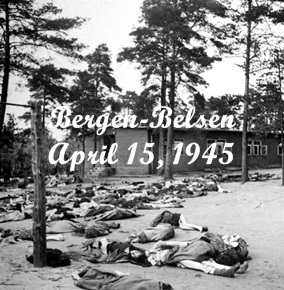
1945 – The British 11th Armored Division liberated the Nazi concentration camp Bergen-Belsen.
The soldiers were totally unprepared for what they found. Inside were more than 60,000 emaciated and ill prisoners in desperate need of medical attention.
More than 13,000 corpses – including the body of Anne Frank – were in various stages of decomposition and lay littered around the camp.
The horrors of the camp, documented on film and in pictures, made the name “Belsen” emblematic of Nazi crimes in general for public opinion in many countries in the immediate post-1945 period.
From 1941 to 1945, almost 20,000 Soviet prisoners of war and a further 50,000 prisoners died there.
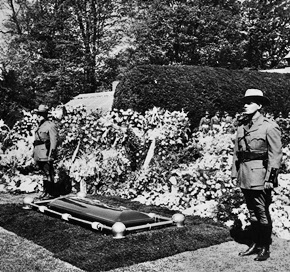
1945 – After lying in state in Washington, DC, President Franklin D. Roosevelt was buried, following a private funeral, at his Hyde Park, NY residence.
Only family members, close friends, high government officials, members of both chambers of the Congress, and heads of foreign missions were in attendance.
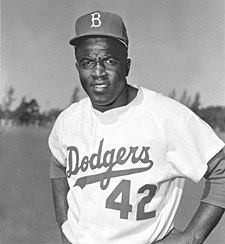
1947 – Jackie Robinson, at the age of 28, became the first African-American player in Major League Baseball when he stepped onto Ebbets Field in Brooklyn to play for the Brooklyn Dodgers.
Robinson broke the color barrier in a sport that had been segregated for more than 50 years.
Robinson’s promotion met a generally positive, although mixed, reception among newspapers and white major league players. Several Brooklyn players insinuated they would sit out rather than play alongside Robinson, but the brewing mutiny ended when Dodgers’ manager Leo Durocher not-so-politely informed the players that Robinson was going to play, whether they liked it or not.
Lasting Legacy: On April 15, 1997, exactly 50 years after his major league debut, Robinson’s groundbreaking career was honored and his uniform number, 42, was retired from Major League Baseball by Commissioner Bud Selig. Robinson’s was the first-ever number retired by all teams in the league.
A “grandfather clause” allowed the handful of players who wore number 42 to continue doing so in tribute to Robinson.
The New York Yankees’ Mariano Rivera, who retired at the end of the 2013 season, was the last player in Major League Baseball to wear jersey number 42 on a regular basis.
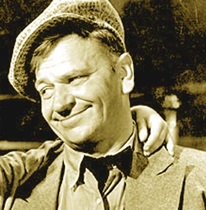
1949 – Academy Award winning Actor Wallace Beery died of a heart attack at the age of 64.
Beery appeared in over 250 films during his 36-year career, including Treasure Island, Viva Villa!, Robin Hood, and The Champ, for which he won the Academy Award for Best Actor.

1971 – At the 43rd Academy Awards, Patton was the big winner, capturing Best Picture, Best Director (Franklin J. Schaffner) and Best Actor (George C. Scott).
Glenda Jackson won Best Actress for Women In Love. John Mills (Ryan’s Daughter) and Helen Hayes (Airport) won Best Supporting Actor and Actress.
Scott became the first actor to reject an Oscar, claiming that the Academy Awards were “a two-hour meat parade, a public display with contrived suspense for economic reasons.”
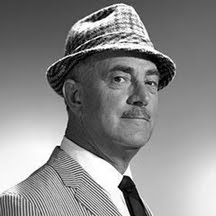
1980 – Actor Raymond Bailey died of a heart attack at the age of 75.
While his film credits included dramatic roles in Picnic, The Gallant Hours, I Want To Live, and Vertigo, Bailey was best known for playing the role of banker Milburn Drysdale in the television comedy series The Beverly Hillbillies.

1990 – Actress Greta Garbo died of pneumonia and renal failure at the age of 84.
Nominated three times for a Best Actress Academy Award – but never a winner — Garbo’s aversion to publicity and the press was undeniably genuine.
She never signed autographs or answered fan mail, nor did she ever appear at Oscar ceremonies, even when she was nominated.
Her intense desire for privacy resulted in her retirement from movies at the age of 35, after acting in only twenty-eight films.
She is closely associated with a line from Grand Hotel, one which the American Film Institute in 2005 voted the 30th-most memorable movie quote of all time … “I want to be alone; I just want to be alone.”
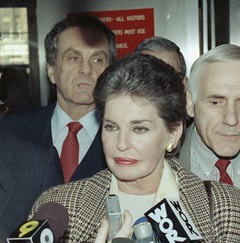
1992 – Billionaire Leona Helmsley reported to Federal Medical Center, a minimum-security prison in Lexington, KY.
“The Queen of Mean” had been convicted of one count of conspiracy to defraud the United States, three counts of tax evasion, three counts of filing false personal tax returns, sixteen counts of assisting in the filing of false corporate and partnership tax returns, and ten counts of mail fraud.
She was sentenced to 16 years in prison but was released from custody on January 26, 1994, after serving nineteen months.
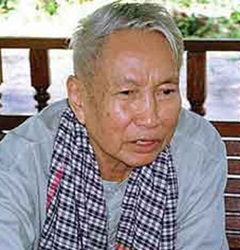
1998 – Pol Pot, leader of Cambodia’s brutal Khmer Rouge regime, died at the age of 72.
Beginning in 1975, Pol Pot conducted a rule of terror that led to the deaths of nearly a quarter of Cambodia’s eight million people through execution, torture, starvation and disease.
After raids by the Khmer Rouge across their border, the Vietnamese invaded Cambodia and in 1979 overthrew the Khmer Rouge regime. Pol Pot fled to the border region with Thailand from where he fought against the Vietnamese-backed government in Phnom Penh.
In 1997, after a power struggle within the Khmer Rouge, Pol Pot was arrested by former colleagues and sentenced to life under house arrest.
While his death was reportedly due to heart failure, many believe he committed suicide (a lethal dose of a combination of Valium and chloroquine) because he was scheduled to be handed over to an international tribunal.

2001 – Joey Ramone, the lead singer and songwriter with the punk rock group the Ramones, died from lymphoma at the age of 49.
Born Jeffrey Ross Hyman, Ramone and his band were a major influence on the punk rock movement in the United States with songs such as Rock ‘n’ Roll High School, Rockaway Beach, and Blitzkrieg Bop.
On March 18, 2002, the Ramones were inducted into the Rock and Roll Hall of Fame.
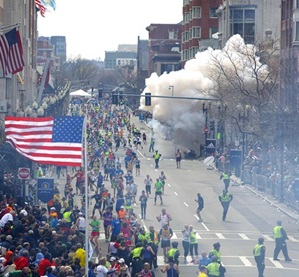
2013 – Two bombs exploded near the finish line of the Boston Marathon, killing three spectators and wounding more than 260 other people in attendance.
Krystle Marie Campbell, Lü Lingzi, and 8-year old Martin William Richard all died from injuries suffered in the bombings.
Three days later, the suspects ambushed and killed Sean A. Collier, an MIT police officer, kidnapped a man in his car, and had a shootout with the police in nearby Watertown, during which two officers were severely injured – one of whom, Dennis Simmonds, died a year later.
On April 19, after an intense manhunt that shut down the Boston area, police captured one of the bombing suspects, 19-year-old Dzhohkar Tsarnaev, who was hiding in a boat in Watertown.
His older brother and fellow suspect, 26-year-old Tamerlan Tsarnaev, died following a shootout with law enforcement shortly after midnight on April 19. He had run out of ammunition and was tackled by policemen who unsuccessfully tried to drag the suspect out of the path of a stolen SUV driven by his younger brother.
The car ran over Tamerlan and dragged him a short distance down the street. He died at 1:35 a.m. at a Boston hospital.
On April 8, 2015, Dzhohkar Tsarnaev was convicted of 30 charges, including use of a weapon of mass destruction and malicious destruction of property resulting in death. Two months later, he was sentenced to death.
While his appeals – which could literally take decades – continue, he is imprisoned at ADX Florence, the most secure prison in the United States.
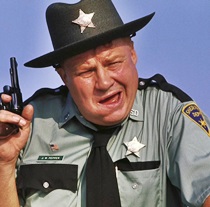
2017 – Actor Clifton James died from complications of diabetes. He was 96.
Although he appeared in over 60 films, including The Untouchables, Eight Men Out, and Cool Hand Luke he may best be remembered for appearing in two James Bond films (The Man With The Golden Gun and Live and Let Die) in the role of inept Louisiana Sheriff J.W. Pepper.
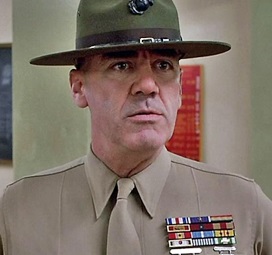
2018 – Actor R. Lee Ermey died from complications related to pneumonia.
A former U.S. Marines drill instructor, Ermey appeared in Apocalypse Now, The Boys in Company C, Sommersby, Dead Man Walking and Mississippi Burning, but he will forever be remembered for his role as Gunnery Sergeant Hartman in Full Metal Jacket.
He was buried at Arlington National Cemetery.
WARNING… Strong language ahead
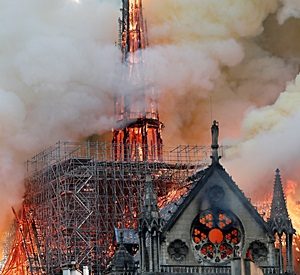
2019 – The Cathedral of Notre Dame in Paris was seriously damaged by a large fire.
One of the most widely recognized symbols of the city of Paris and the French nation, the cathedral’s construction began in 1160 and was largely complete by 1260, though it was modified several times in the following centuries.
While undergoing renovation and restoration, the roof of Notre-Dame caught fire and burned for around 15 hours, sustaining serious damage, including the destruction of the iconic timber spire and most of the lead-covered wooden roof above the stone vaulted ceiling
According to later studies, the fire broke out in the attic of the cathedral at 6:18 p.m. The smoke detectors immediately signaled the fire to a cathedral employee, who did not summon the fire department but instead sent a cathedral guard to investigate.
Unfortunately, the guard was sent to the wrong location, to the attic of the adjoining sacristy, and reported there was no fire. About fifteen minutes later the error was discovered, and the guard went to the correct location.
The fire brigade was still not notified.
By the time the guard had climbed the three hundred steps to the cathedral attic the fire was fully developed. The alarm system was not designed to automatically notify the fire department, which was finally summoned at 8:51, more than half an hour after the fire alarm had begun sounding.
Compiled by Ray Lemire ©2020 RayLemire.com / Streamingoldies.com. All Rights Reserved.